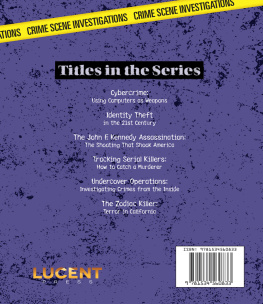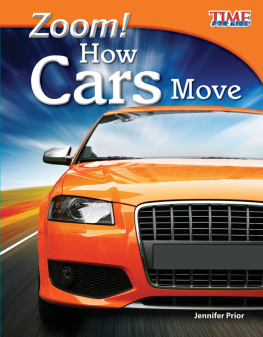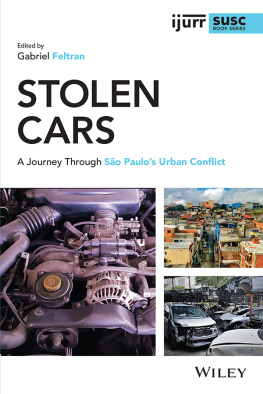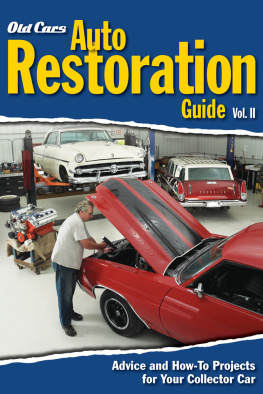Stealing Cars
STEALING CARS

Technology & Society from the Model T to the Gran Torino
JOHN A. HEITMANN
& REBECCA H. MORALES

2014 Johns Hopkins University Press
All rights reserved. Published 2014
Printed in the United States of America on acid-free paper
9 8 7 6 5 4 3 2 1
Johns Hopkins University Press
2715 North Charles Street
Baltimore, Maryland 21218-4363
www.press.jhu.edu
Library of Congress Cataloging-in-Publication Data
Heitmann, John Alfred.
Stealing cars : technology and society from the Model T to the Gran Torino/
John A. Heitmann and Rebecca H. Morales.
pages cm
Includes bibliographical references and index.
ISBN 978-1-4214-1297-9 (hardcover : alk. paper) ISBN 978-1-4214-1298-6 (electronic) ISBN 1-4214-1297-7 (hardcover : alk. paper) ISBN 1-4214-1298-5 (electronic)
1. Automobile theftUnited StatesHistory. 2. Automobile theftUnited StatesPrevention. 3. AutomobilesTechnological innovations. 4. Automobile thievesUnited States. 5. Grand Theft Auto gamesSocial aspects. 6. Automobile theftMexican-American Border Region. I. Morales, Rebecca. II. Title.
HV6658.H45 2014
364.16' 286292220973dc23 2013032111
A catalog record for this book is available from the British Library.
Special discounts are available for bulk purchases of this book. For more information, please contact Special Sales at 410-516-6936 or specialsales@press.jhu.edu..
Johns Hopkins University Press uses environmentally friendly book materials, including recycled text paper that is composed of at least 30 percent post-consumer waste, whenever possible.
Contents
Appendix. Tables Summarizing Various U.S. Automobile
Theft Crime Reports and Surveys, 19242010
Acknowledgments
Rarely is a book of this complexity the result of authors working without considerable assistance. For author Heitmann, the list of those who contributed to the work is long, and there is always concern that someones name will be left out. Certainly former student Peter Cajka, now at Boston College, was crucial to getting this work off the ground, as his research formed the core of what was initially included on the history of auto theft in The Automobile and American Life. Later we traveled to the National Archives in College Park, Maryland, where more source mining took place. Peter also did considerable work on the topic of electronic gaming, which is a part of .
During the fall of 2010, a meeting with Johns Hopkins University Press editor Ashleigh McKown at the SHOT Meeting in Tacoma encouraged me to move forward on the project. When Ashleigh subsequently moved on, senior editor Robert Brugger shepherded the study, making sure that the broader significance of car theft, including motives, was examined. Two anonymous reviewers recommended revisions to bring this work up to the standard of excellence that the Press is known for. Finally, copy editor Lois Crum did a remarkable job in pointing out inconsistencies and smoothening prose.
What proved decisive, however, was my appointment as the visiting Knapp Chair in the Liberal Arts at the University of San Diego, where Dean of the College of Arts and Sciences Mary Boyd, History Department Chair Ken Serbin, and Professor Molly McClain gave me the opportunity to work without distraction on the topic. Upon my return to the University of Dayton, Dean of the College of Arts and Sciences Paul Benson and History Department Chairs Julius Amin and Juan Santamarina ensured that I had the time and resources to finish the job. A summer University of Dayton Research Council Fellowship provided generous support during the summer of 2011. Todd Uhlman, a colleague in the history department, taught me much about film analysis and forced me to think philosophically, culturally, and above all abstractly. His thinking left a lasting imprint on the cultural analysis contained in this book. Finally, Roger Morris, Vice President of Communications at the National Insurance Crime Bureau, welcomed me to the organizations headquarters in Chicago, where he freely shared historical material that is seen throughout this book.
For my Automobile and American Life, editor Niki Johnson, now retired from the University of Dayton Research Institute, tirelessly polished my prose and caught errors and omissions. Afterward, I heard many compliments concerning the quality of that book, which was the result of Nikis keen eyes and not my more casual attitude to precision. Again Niki stepped forward to edit this manuscript, and I am forever grateful for her unselfish commitment to helping me.
People closest to me also proved crucial to the completion of this book project. Coauthor Rebecca H. Morales willingly gave her time and prodded, cajoled, and encouraged as needed. And then my family had its role as well. My wife Kaye manned the fort in Dayton while I was in sunny San Diego, with the small consolation of operating a new snow blower while I was playing tennis at Balboa Park! Daughter Lisa, living in San Diego, provided meals and company, along with son-in-law Tony, whose car-restoration projects kept my feet on the ground when I was inclined to just read books on automotive history.
I dedicate this book to my Johns Hopkins University dissertation director, the late Owen Hannaway. Back in the 1980s, Owen took this pretty rough would-be scholar and made him much better, never forcefully dictating a course of study, but always gently directing. I can still see him beaming when he talked about the docks of Glasgow! With a totally open mind toward the choice of subject material and approach, Owen understood that in a subtle way, an author must intimately connect with the material, making it his own.
For Rebecca Morales, this was a journey full of surprises, with potholes, caveats, and unexpected insights along the way. Perhaps the single person who proved to be the most important touchstone was Frank G. Scafidi, Director of Public Affairs for the National Insurance Crime Bureau in Sacramento, California. Without fail, Frank provided a reality check whenever one was needed, and he opened doors to hard-to-access data and people.
When it came to two boots on the ground, Steve Witte, Chula Vista Police Sergeant and Head of the San Diego Regional Auto Theft Task Force, and Richard Valdemar, a retired Sergeant with the Los Angeles County Sheriffs Department, were invaluable. Their knowledge provided the nuance that is lost in mere numbers on a page; their interpretation of events shed light on obscure information.
The long and at times difficult relations between Mexico and the United States over auto theft were made more understandable by David A. Shirk, Associate Professor of Political Science and International Relations and Director of the Trans-Border Institute at the University of San Diego. Further assistance was provided by Efrain Aceves, a scholar and policy analyst in Mexico City who shared his broad expertise that spans many disciplines.
In addition, I would like to thank the following people for their generous time and thoughts: Annette Villarreal, Supervisor, Texas Department of Public Safety, Border Auto Theft Information Center / CID, El Paso, Texas; Ralph Lumpkin, Director of Operations for Area 3, National Insurance Crime Bureau, Chula Vista, California; and Dennis Frias, California Operations Manager, Oficina Coordinadora de Riesgos Asegurados S.C., Covina, California.
Next page









